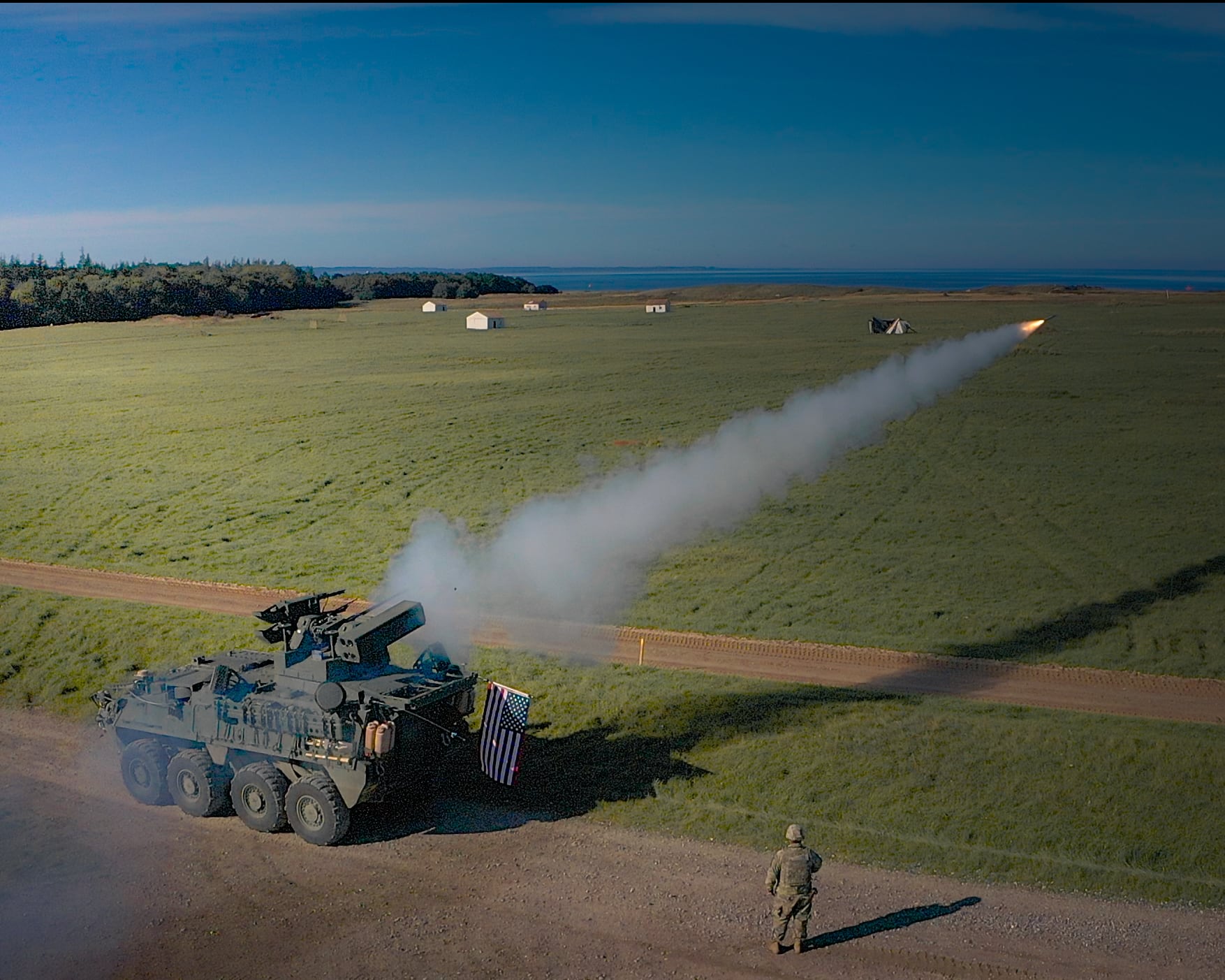WASHINGTON — The U.S. Army is pursuing a Stinger missile replacement for short-range air defense that can go faster, survive jamming and more easily hit tougher targets like drones, according to the service’s program executive officer for missiles and space.
The service last month awarded RTX and Lockheed Martin with contracts to competitively develop the Stinger replacement. The RTX-manufactured Stinger missiles are currently used in the Army’s interim Maneuver-Short Range Air Defense system and also in a man-portable configuration to provide air defense.
The Army has long-planned to pursue a next-generation interceptor for short-range air defense, but the effort has become paramount as Stinger missiles were sent to Ukraine in response to Russia’s invasion of the country.
The Army no longer builds new Stinger missiles; it refurbishes old ones. To replenish its own stockpile, the Army would like to replace the old missiles with new ones.
But the service still plans to take five years to develop and qualify the new interceptor and move into low-rate production, Brig. Gen. Frank Lozano, who runs Program Executive Office Missiles and Space, told Defense News in a recent interview.
The Army will break up the five-year effort into two phases, he said. In the first two years, each of the two companies will develop missiles and then build a “very small quantity” of them. Then at the end of the period, the service will have a “fly-off,” Lozano said.
If both missiles perform well, then the Army would carry both vendors into the second phase of the rapid prototyping effort. During that phase, the Army will ask the teams to tweak and improve their missiles “in a few key areas” and have them build another round of prototypes, according to Lozano.
The competitors would go through another fly-off round. Then the service would select one vendor to move into production.
Of course, Lozano said, the Army plans to be flexible. “If one vendor does very well and the second vendor does very poorly, then we have that decision there at the end of the two-year time period to off ramp one of the vendors and just proceed with a single vendor for the final three years of the program. We’d really not prefer to do that; we really want to keep that competition as long as possible.”
The next-generation interceptors will have to go into two Stinger Vehicle Universal Launch systems on the Maneuver-Short Range Air Defense system turret, Lozano said, and into a man-portable system.
The Army wants an interceptor that can still fit into the Stinger Vehicle Universal Launch system and into the man-portable system but has a “shorter time to target,” Lozano added, which translates to having an advanced rocket motor.
The interceptor will also feature countermeasures so that it can repel electronic warfare threats the service has seen emerging on fixed-wing aircraft, Lozano noted.
Additionally, the new missile “needs to be more effective against [unmanned aircraft system] threats,” he said, which are more challenging to hit because they don’t give off a significant heat signature like fixed-wing or rotary-wing aircraft.
“They can be very difficult to target for some systems, so we need to have an advanced seeker,” Lozano explained.
Meanwhile, the Army is gearing up for a first user assessment for its Stryker-based Maneuver-Short Range Air Defense system in Germany. The service rapidly fielded an interim system nearly two years ago to address a rising need to provide air defense capability that can keep up with maneuver formations in the European theater. The capability gap was first identified by then-U.S. Army Europe Commander Gen. Ben Hodges in 2016.
The Army outfitted a platoon within the 5th Battalion, 4th Air Defense Artillery Regiment in Europe with the interim short-range air defense systems, which Lozano said he visited last month.
The unit is gearing up to conduct a user assessment in the spring of next year, after it was delayed from earlier this year due to scheduling conflicts, according to Lozano.
“It’s important to us to perform that user assessment to build the body of test data that will support eventually taking the systems to a milestone C [production phase],” he said.
“Once the Army makes a decision on whether or not we’re going to buy more battalions, then that will allow me to better shape what the initial operational test and evaluation looks like,” he added, which is forecast for the fiscal 2025 or fiscal 2026 time frame.
Jen Judson is an award-winning journalist covering land warfare for Defense News. She has also worked for Politico and Inside Defense. She holds a Master of Science degree in journalism from Boston University and a Bachelor of Arts degree from Kenyon College.




